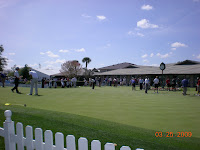The ski/snowboard season is just a month away for us here in the Vail Valley. Some of you may have already taken advantage of Loveland or A-Basin and started your season early. For many individuals your summer has been filled with tackling the mountain on a bike or your good ole two feet. Kudos to you for being active, but skiing is a different animal altogether. And if you have not already started preparing for the winter season, now is the time. Prevention is the key to avoiding injury on the slopes. A well rounded conditioning program consisting of five key injury prevention workouts will help prepare you for the mountain and most importantly help to decrease your risk for injury. What are those 5 key injury prevention workouts?
1. Cardiovascular Endurance
2. Muscular Strength
3. Muscular Flexibility
4. Muscular Stability
5. Plyometric Strength
Each key prevention workout and their effect on decreasing the risk of injury are explained below:
Cardiovascular endurance is vital when lasting on the mountain run after run. The cardiovascular system delivers blood and oxygen to your working muscles. A conditioned cardiovascular system allows muscles to perform longer before fatigue occurs. Fatigue is one of the number one causes for injuries when skiing. The majority of injuries occur at the end of the ski day, when the muscles have lost their ability to use and produce energy efficiently. Start building up your cardiovascular endurance now by performing 3-5, 30-45 minute aerobic sessions per week. Some of the best choices for training the cardiovascular system are running, biking, rollerblading, stairmaster, elliptical, or arc trainer.
Muscular strength is also important when preparing for the ski season. The muscles and particularly the joints sustain a great deal of stress when skiing. Increasing strength increases the ability to endure the high stress demands of skiing. Even though skiing is a total body workout, specific major muscle groups are often used more including the quads, hamstrings, calves, low back, and core. During skiing the majority of your joints (knees, hips, ankles, and back) are kept in a flexed position, putting several muscle groups in an anti-gravity or eccentric loading position. Incorporating slow, controlled, eccentric training for the hamstrings, glutes, quads, and calves can help to improve your performance in turn decreasing your risk for injury. Some of the best ski conditioning exercises includes squats, split squats, ball hamstring curls, bridges, and calf raises.
Building strength in the legs is important for skiing, but so is building the strength of your core and low back. Remember, when skiing you are in a bent position which can place a lot of pressure on your low back. Improving your core and low back strength will help to offset low back discomfort. Core strength refers to not only strengthening the deeper, intrinsic muscles of the abdomen, but also the larger superficial muscles. The intrinsic muscles provide a “girdle” type of support between the rib cage and pelvis. The superficial muscles provide support for larger movements. Having a strong core improves your stability and decreases your risk for low back injury. Some great core exercises to incorporate into your ski conditioning program include plank, side plank, superman, birddog, and the dead bug series.
Muscular flexibility is another key factor when preparing for the upcoming ski season. Muscles need to be pliable when skiing. Tight muscles increase your risk for muscular sprains/strains or even more serious injuries including ACL tears, or avulsions. Since skiing is a predominately fixed, flexed sport attention needs to be given to hamstrings, hip flexors, calves, low back, and chest. Some light stretching of these areas should be performed before hitting the slopes and then more time spent stretching these areas again after skiing. Beneficial flexibility effects occur when the stretch is held for 30 seconds or greater. Try and stretch each muscle group 2-3 times.
When skiing, the terrain is always changing; therefore you must have excellent balance and full body stability. Increased balance and stability decreases your risk for falling due to enhanced proprioception along with an increased reactive ability to self-correct changes in your balance. Balance training can easily be added to you ski conditioning program by using equipment such as dyna discs, BOSU’s, and stability balls. Try those same exercises suggested earlier in the muscular strength section, but on a BOSU.
Plyometrics can be incorporated with stability training. Plyometrics are explosive movements such as jumping, power squats, and split lunges. Plyometrics are very stressful on the body and should only be performed after you have built a strong cardiovascular, strength, flexibility, and stability base. Adding plyometrics to your ski training regimen will help you prepare for the rigors of landing after bumps, jumps, and moguls, by training you how to absorb impact with a less rigid frame decreasing your risk for injury.
Preparation is prevention. This winter you’ll want to spend your time on the mountain not on the couch with an injury. You now have 5 key injury prevention type workouts to help prepare you for this season…..so get to work!
 Casey Charlebois MS, MPT is a physical therapist and personal trainer with VIMG. If you have questions, you can reach her by email at casey@vailhealth.com. If you wish to jumpstart you ski conditioning program and get you season started right, call 926-4600 to schedule an appointment.
Casey Charlebois MS, MPT is a physical therapist and personal trainer with VIMG. If you have questions, you can reach her by email at casey@vailhealth.com. If you wish to jumpstart you ski conditioning program and get you season started right, call 926-4600 to schedule an appointment.
























